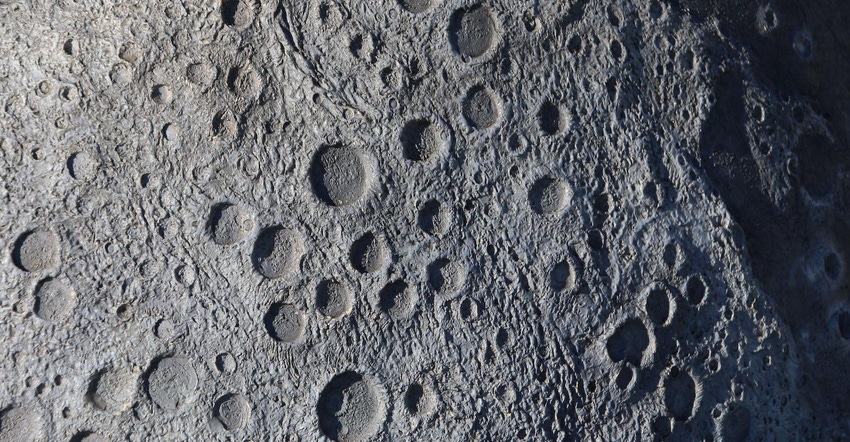Renewed Interest in Lunar Concrete Driven by NASA Research
Academic researchers are looking for clues as to how lunarcrete will perform in space with hopes of deploying it on the moon and beyond.

Recent federal government initiatives to establish a permanent presence on the moon are leading to a renewed interest in lunar concrete.
Several years ago, astronauts first mixed key components of Portland cement on the International Space Station, and a federal grant was awarded as recently as last year to study lunar concrete on the molecular level.
That research grant, worth $100,000, was awarded to Clarkson University as part of NASA’s Moon-to-Mars Planetary Autonomous Construction Technology project, which seeks to develop capabilities to build infrastructure on the lunar surface, according to an overview of the program on NASA’s website.
The team, which is collaborating with researchers from Penn State, is being led by Robert Thomas, an assistant professor of civil and environmental engineering at Clarkson University.
“With launch costs on the order of $10,000 per kg of payload, it is not feasible to use terrestrial cements in extraterrestrial construction. This project will develop and characterize infrastructure materials based on available lunar resources,” Thomas said in a release about the research grant on Clarkson University’s website.
The research team will study lunar concrete at the microscopic level “due to the scarcity of materials and size constraints,” the release stated. “Characterizing the composition, structure and mechanics of lunar concrete at this scale should give them valuable clues about how it will perform at the structural scale in the complex lunar environment.”
Jake Newman, a spokesman for Clarkson University, said the NASA grant, which was originally set to expire in February, has been extended through the end of the year.
Background on ‘lunarcrete’
Lunar concrete, or “lunarcrete” as it is sometimes called, was first made from lunar soil in the 1980s using conventional cement and water, leading to the formation of an American Concrete Institute committee to explore the topic.
ACI “got all excited about concrete on the moon,” said Michelle Wilson, the director of technology for the Portland Cement Association, to an audience at the World of Concrete, where she hosted an educational session about innovations in concrete technology.
ACI Committee 125, named Lunar Concrete, was formed in 1988 with an objective to develop technologies and correlate existing knowledge to create recommendations for construction on the moon. In 1991, the committee published SP-125: “Lunar Concrete, Exploring the Production and Use of Concrete on the Moon.”
Wilson said several recessions and a general lack of interest in NASA slowed progress shortly after lunar concrete was first developed. Recently, that has changed.
“Guess what (the government) cares about again? Outer space,” Wilson said. In 2019, NASA posted an update on its website. Tricalcium silicate, which is the main mineral component of most commercially available cement, controls many of its chemical reactions and properties, according to NASA.
“On missions to the moon and Mars, humans and equipment will need to be protected from extreme temperatures and radiation, and the only way to do that is by building infrastructures on these extraterrestrial environments,” said principal investigator Aleksandra Radlinska of Penn State in a press release. “One idea is building with a concrete-like material in space. Concrete is very sturdy and provides better protection than many materials.”
Chapter 24 of the PCA’s guide on innovations in concrete tech explains how the space station experiments were carried out.
“For the project, researchers mixed 12 pastes of cementitious powders and additives which were delivered to the space station via a capsule. Each sample included a bag with a burst pouch full of water. Astronauts ruptured the water pouch then massaged the liquid into the cement powder and mixed it with a spatula for 90 seconds.”
While interesting, Wilson said the tests on the space station haven’t produced concrete as we know it yet.
“We’re still at the mortar level,” she said.
The current research into lunar concrete is largely part of NASA’s Artemis project. It’s an ambitious plan to “collaborate with commercial and international partners and establish the first long-term presence on the moon,” according to NASA’s website.
Meanwhile, NASA is planning for “potentially 3D printing as well,” as part of its research into lunar concrete, Wilson told the WOC attendees.
About the Author(s)
You May Also Like




